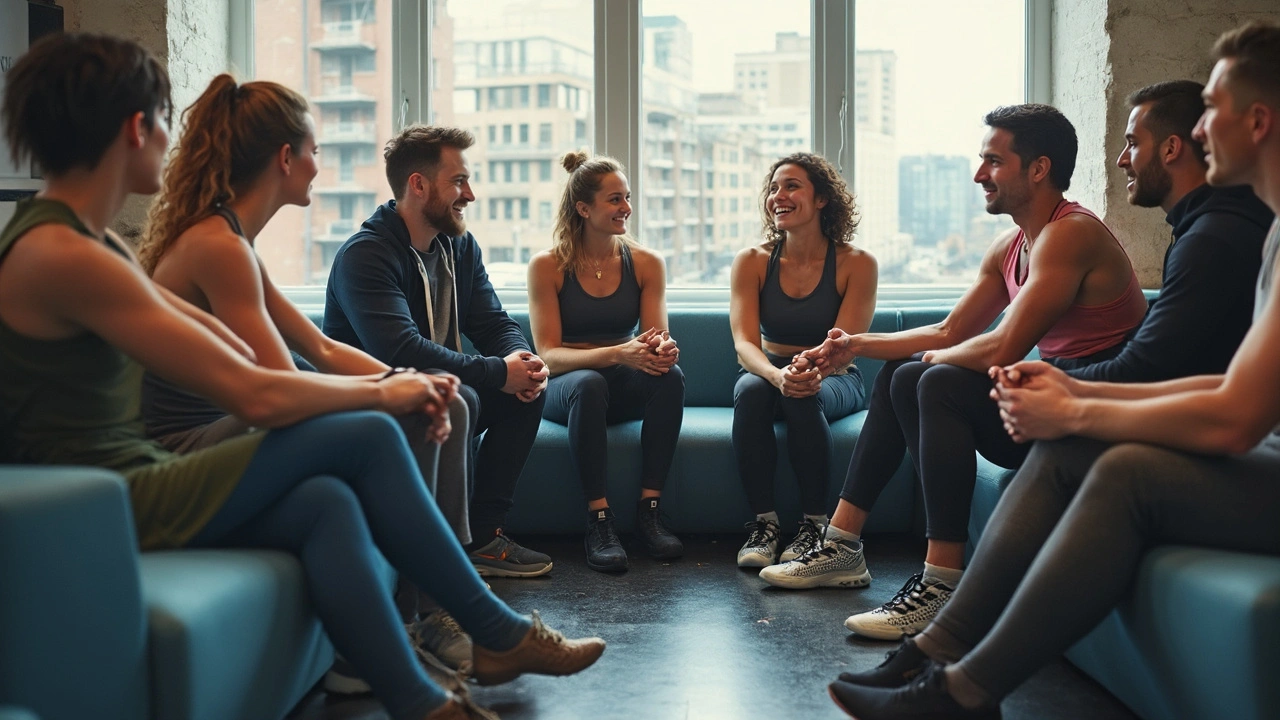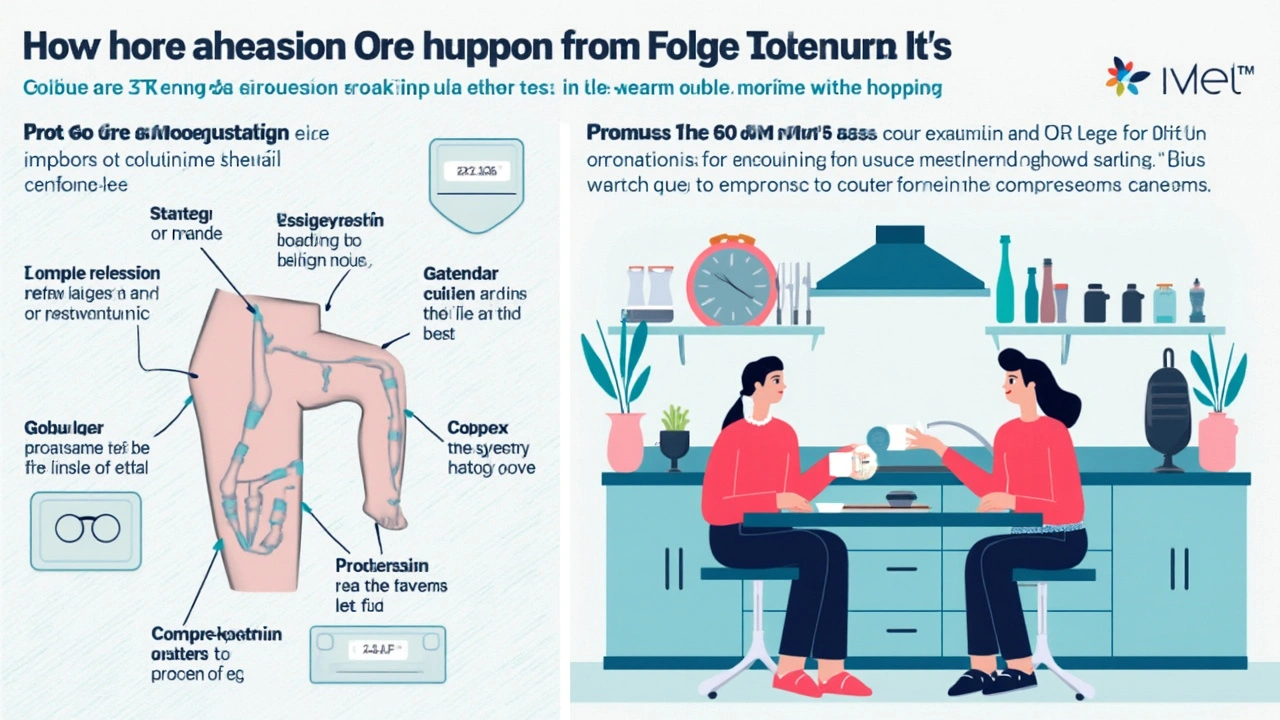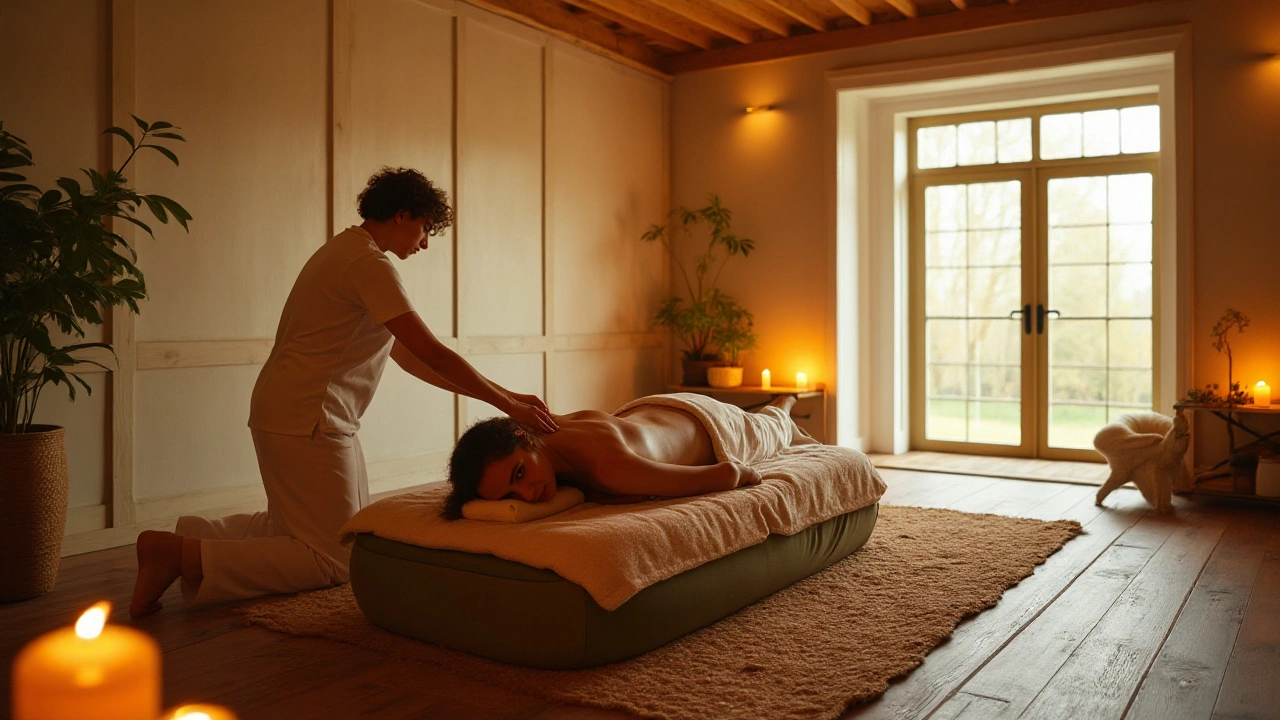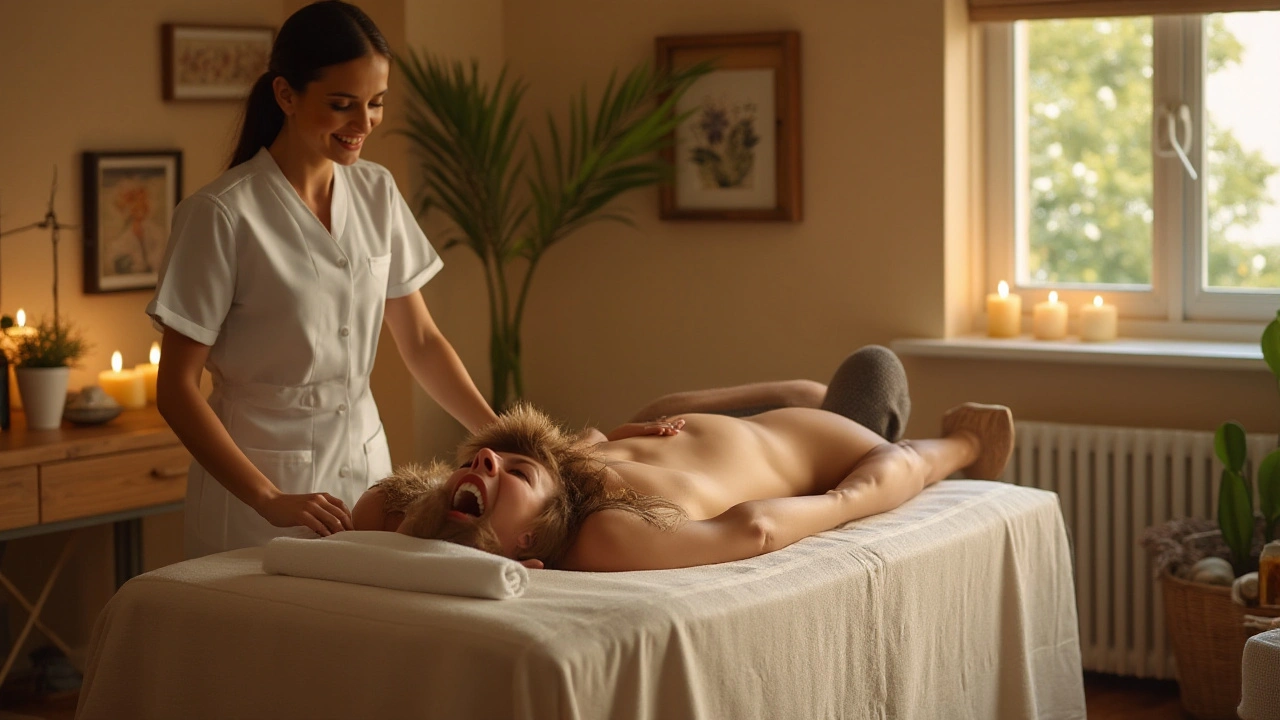Compression Massage: Real Relief or Just Hype?

You’ve probably seen those crazy inflatable boots on pro athletes, or maybe heard about wearable massage sleeves. It all sounds high-tech, but what’s really going on inside this world of compression massage? Here’s the no-nonsense scoop: compression massage isn’t just a fancy spa treatment. It’s about using pressure—either with hands, special tools, or machines—to squeeze your muscles and get your blood moving.
Why would anyone want their legs squeezed, anyway? Because it actually helps tired muscles get rid of waste faster and brings in fresh blood to speed up healing. That’s a big reason you see marathon runners, soccer players, and even folks banged up from yard work sliding into compression gear. You don’t have to be a pro to get results—everyday people use it for leg aches, swollen feet, and sore backs. Curious if it could help you recover quicker or just feel better after a long day? There’s more to this trend than a good Insta pic. Let’s break it down and see what’s worth your time—and what’s just marketing fluff.
- What Compression Massage Is—and Isn't
- Science Behind the Squeeze
- Real-Life Benefits (and Myths Busted)
- How To Try Compression Massage Yourself
- Tips for Getting the Most Out of Your Session
What Compression Massage Is—and Isn't
If you think compression massage is just someone squeezing your muscles, you’re only partly right. At its core, this method uses steady, pulsing, or rhythmic pressure to move blood and fluids through your muscles, basically helping your body pump out the bad stuff and bring in the good stuff. That’s why people swear it helps with muscle recovery, less swelling, and even relaxation.
Compression massage can be done a few different ways. Sometimes a professional will press or knead muscles with their hands, elbows, or simple tools—think of those foam rollers you see at the gym. More advanced? Machines like compression boots or sleeves that use air to inflate and deflate in cycles. These gadgets often have adjustable settings, so you can pick how intense you want the pressure to feel.
- Manual compression: Hands-on, used by massage therapists or on yourself with tools.
- Pneumatic devices: Machines or boots that squeeze your legs or arms in timed patterns.
- Static wraps: Elastic bandages or sleeves that provide ongoing light squeeze, mostly for swelling—not the same as targeted compression massage.
So what isn’t compression massage? It’s not just wearing tight socks or shapewear. Those can help with swelling, but they don’t give you the same deep, circulation-boosting effects as a real massage… no matter what the packaging says.
“Adding compression therapy to a massage routine can lead to a faster reduction in soreness and improved limb recovery,” says Dr. Brian Kelly, chiropractor and sports rehab specialist.
Research backs up a lot of these claims. For example, a study in the Journal of Strength and Conditioning Research found that athletes using dynamic pneumatic compression massages reported 32% less muscle soreness the day after tough workouts. That’s not just hype—it’s measurable benefit.
Bottom line: If you want to jumpstart recovery, cut down pain, or even just feel looser after sitting all day, compression massage works by making your body’s own circulation do the heavy lifting. That’s a lot more effective than hoping those tight socks will solve everything.
Science Behind the Squeeze
So, how does compression massage actually work? The basic idea is simple: apply gentle to firm pressure along your muscles to boost blood flow and flush out waste. Our muscles build up lactic acid and other stuff as we move around, especially after exercise. Compression helps move that gunk out faster by giving veins and lymph vessels a nudge, which can bring relief and speed up muscle recovery.
Ever noticed how icing your ankle or elevating sore legs takes the edge off? Compression does something similar—just without the freezing toes. It supports your tissues and pushes blood back toward your heart, cutting down on swelling and heavy-leg feelings. A study published in the Journal of Sports Sciences in 2022 found, "athletes who used compression massage devices for 20 minutes after intense exercise showed a 25% faster drop in muscle soreness compared to those who rested alone." That’s not magic—that’s simple biology.
"Compression therapy increases venous blood flow, reduces muscle fatigue, and improves perceived recovery." — Dr. Jessica Ramirez, Sports Medicine Specialist
Different tools offer different levels of squeeze. Hand-held compression massage from a pro is targeted and can find problem spots. But automated sleeves or boots make it easy to use at home or the gym, letting you set the pressure and kick back. Some even use cycles of pressure and release, almost like a supercharged hug for your legs.
Here’s a quick look at how compression massage affects your body:
- Makes blood move faster, delivering more oxygen to muscles.
- Flushes out waste products like lactic acid.
- Lowers swelling after tough workouts or long hours standing.
- Helps calm down nerves and muscle tension.
Want numbers? Check out this quick snapshot from recent trials:
| Group | Recovery Time (hours) | Soreness Level* |
|---|---|---|
| With Compression | 12 | 2.1 |
| Without Compression | 18 | 3.0 |
*On a 1–5 scale, 5 being most sore
Bottom line: the science behind compression massage is more than hype. It’s about helping your body bounce back faster, whether you’re crushing workouts or just trying to get through the workweek without aching everywhere.

Real-Life Benefits (and Myths Busted)
Let’s get real—people buy into compression massage because they want quick fixes for sore muscles or tired legs. So, does it actually deliver, or is it just another health fad with a cool name?
Here’s what actually happens: when you squeeze your muscles, you help push out extra fluid and kick-start blood flow. That can mean less swelling after a tough workout or long day on your feet. Physical therapists sometimes use compression massage for folks recovering from injuries because it helps speed up that healing process. A 2022 study in the Journal of Sports Rehab found that athletes using leg compression boots after running had less soreness and bounced back faster—about 24% quicker compared to those who just did nothing.
But hold on. Don’t expect miracles. Compression massage isn’t a magic cure for injuries—if you’ve pulled a muscle or have serious pain, you’ll still need real treatment. It also won’t melt away body fat or replace a proper warm-up before exercise, no matter what flashy ads tell you.
Here’s a quick look at common claims versus what research and real users see:
| Claim | What Actually Happens |
|---|---|
| Speeds up muscle recovery | Yep—boosts blood flow, less soreness for most |
| Removes lactic acid | Kinda. Helps move metabolic waste, but not instant |
| Slims legs or arms | Nope, not permanent—just reduces puffiness |
| Heals injuries | Helps some, but won’t fix big problems alone |
If you want real benefits from compression massage, use it as one piece of your self-care. Pair it up with stretching, rest, and maybe some ice when things get rough. And if it starts to hurt or makes swelling worse, hit pause and check with your doctor.
Bottom line: do you get fresher-feeling legs and faster bounce-back? For most people, yes. But it’s no replacement for smart recovery habits or professional advice when you’re hurting.
How To Try Compression Massage Yourself
If you’re curious about compression massage, the good news is you don’t need a pro to get started. People at home can try lots of different methods to see what feels best and fits their needs. Here’s how to get into it, no fuss needed.
- Grab a compression device: You can find leg sleeves, arm cuffs, or even full-body units online and in stores these days. Brands like Normatec and Therabody make those popular inflatable boots—just make sure what you’re buying actually targets the area that bothers you.
- Stick to the basics: Start with a clean area and dry skin. Tighten the device around your limb according to the instructions (don’t overdo it—no numb toes allowed!). Most gadgets let you choose how tight and how long the session lasts; many people begin with 10–20 minutes on a medium setting.
- Try manual techniques: If you’re not into gadgets yet, you can use your hands—or a foam roller. Squeeze muscles gently in rhythmic motions, always moving toward your heart. This type of DIY compression massage is great for calves, forearms, and thighs.
- Don’t skip warm-ups: Before you slap on those boots or start squeezing away, walk around and get your blood flowing. Cold muscles don’t like sudden pressure.
- Keep an eye on how you feel: If you notice tingling, sharp pain, or strange color changes, stop. Compression massage is supposed to boost recovery, not cause trouble. If things feel off, it’s worth checking in with your doctor (especially for folks with vein issues or diabetes).
If you’re wondering about timing, here’s a quick guide:
| When to Use | How Long | What to Target |
|---|---|---|
| After workouts | 10-30 minutes | Legs, arms, sore muscles |
| Long travel days | 15-20 minutes | Feet, calves |
| Swelling from standing/sitting | 10-30 minutes | Feet, lower legs |
One last heads-up: don’t believe every claim online. Compression massage won’t magically erase fat or fix every pain, but most people notice less soreness and quicker bounce-back—especially if you’re active or on your feet a lot. Start slow, listen to your body, and see if it makes a difference. That’s what counts.

Tips for Getting the Most Out of Your Session
Getting serious about compression massage? Don’t just strap in and zone out—there’s a right way to make sure you’re not wasting your time or money. Here’s how to actually maximize the benefits.
- Hydrate beforehand and after. Pressure moves fluids through your muscles, and water helps sweep out all that waste. If you’re low on fluids, you won’t recover as well.
- Time it right. For muscle recovery, the sweet spot is usually 1–2 hours after your activity. Too soon and you might miss the full benefit; wait too long, and soreness can set in. If you’re just trying to relax, any time works.
- Watch the pressure. More intense doesn’t always mean better. The American Massage Therapy Association suggests sticking with a medium squeeze—enough to feel it, but not so much that it hurts or feels numb.
- Keep sessions reasonable. 15–30 minutes is enough for most people, according to gear manufacturer Normatec. Overdoing it isn’t going to speed up recovery and might even cause more swelling.
- Pair with gentle movement. Don’t just rely on the compression massage machine. Light stretching or a slow walk afterward can actually keep blood flowing and improve results.
- Stick to clean, dry skin. Sweat or lotion gets sticky and messes up the machine fabric (or hands, if it’s manual). Clean skin also reduces the risk of any skin irritation.
Here’s a quick comparison of sessions, from weekend warriors to elite athletes:
| User Type | Session Length (min) | Optimal Pressure |
|---|---|---|
| Everyday User | 15–20 | Low–Medium |
| Active Athlete | 20–30 | Medium |
| Pro Athlete | 30 | Medium–High |
One last heads-up: If you have medical issues like deep vein thrombosis, diabetes, or anything that affects blood flow, talk to your doctor before trying compression massage. A little caution now can save a lot of trouble later.





